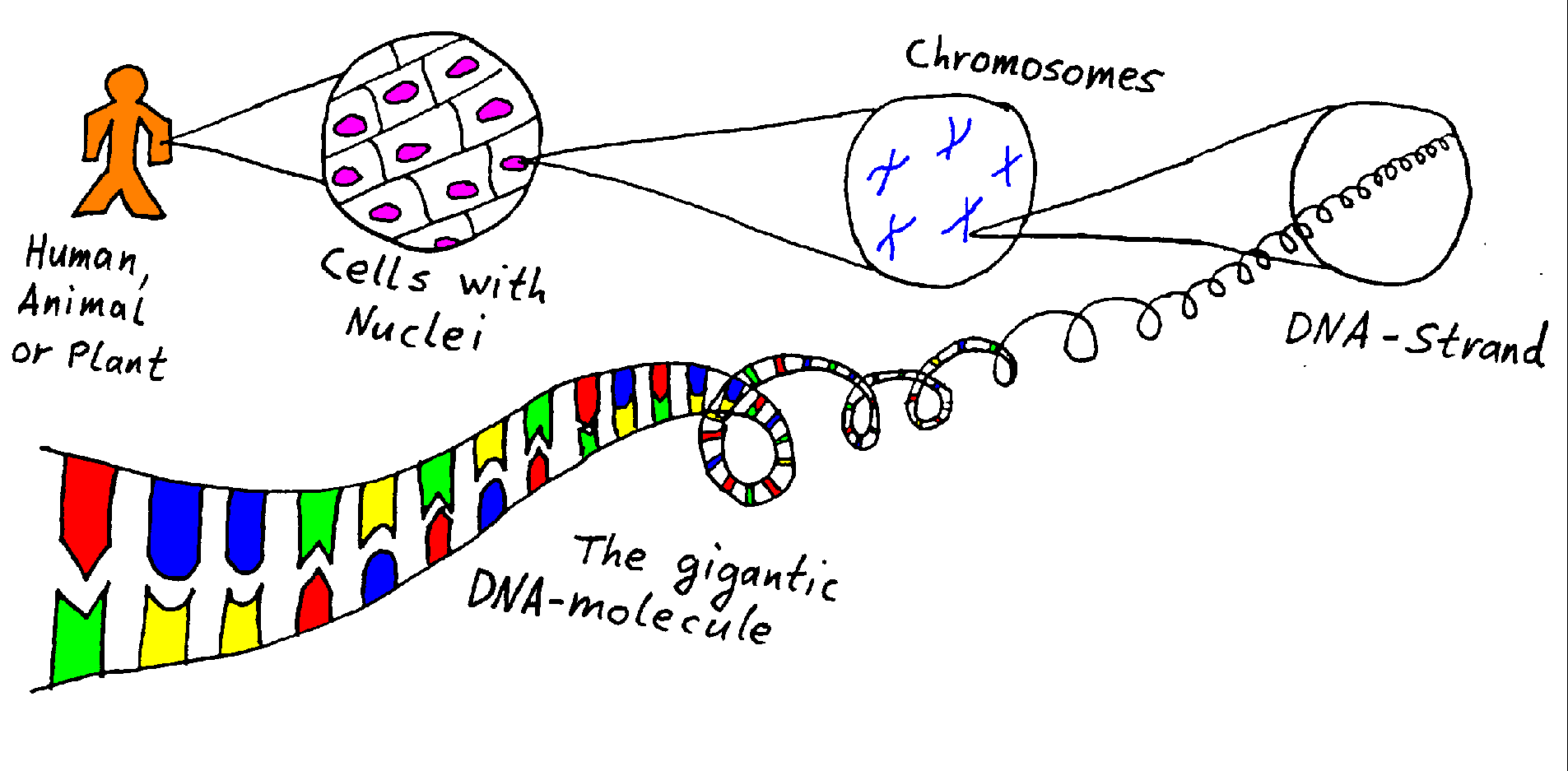

Please try to imagine to take a small piece of living tissue and zoom it again and again, using more and more powerful microscopes...
Each living being's tissue is composed from cells which are the smallest living units. Cells consist of several parts, the most notable is a large area called the nucleus. Zooming again, you will discover a lot of X-shaped particles. These are called chromosomes. When you zoom again, you will find that there is a tangled strand in each chromosome. A closer look reveals that this strand is made from only one single molecule, called DesoxyriboNucleinAcid, shortly DNA.
The DNA molecule has the shape of a contorted ladder which consists mainly of sugar and phospate molecules. The steps of this ladder, however, are formed from pairs of 4 different bases:

Usually, the bases on the DNA are paired together (Adenine is paired with Thymine and Cytosine is paired with Guanine) and a triplet of pairs represents a coded information. When the DNA is scanned, it is used as a master for the creation of the different proteines which are essentially for every living being. Thus, the sequence of base pairs determines many features of a living being, namely these features which are not caused by environmental influences but given from ancestors to heir again and again. These fairly constant features are called the genes.
Some examples of these genetically determined features are hair and eye colors or some genetically caused diseases. But how the mapping from DNA to genes can be made, is a highly complex problem. For a few genes, it is known, but in the most cases it is unknown! Equal base sequences appear on several places of the DNA, a gene can be split and be located on different places of the DNA, genes may make other genes inactive and several areas of the DNA contain only appearently useless repetitions of base pairs, their function is unknown yet.
 Almost every cell in a living being includes a copy of the DNA which describes the features of this being. Try to imagine a house where each brick contains a copy of the construction plans, but in the case of the DNA, the construction plan appears to be encoded.
Almost every cell in a living being includes a copy of the DNA which describes the features of this being. Try to imagine a house where each brick contains a copy of the construction plans, but in the case of the DNA, the construction plan appears to be encoded.
The process of decoding these huge amount of information has just started, the genetic research is a very young science.
It is also important to note that almost all plants, animals, micro-organisms and the human have DNAs, which have different sequences of base pairs on them and different lengths, but they are all composed from the same simple chemical components. This fact tempts the scientists to the thought to transfer genes via the exchange of DNA parts. So the "passive" gene research becomes "active" gene manipulation...